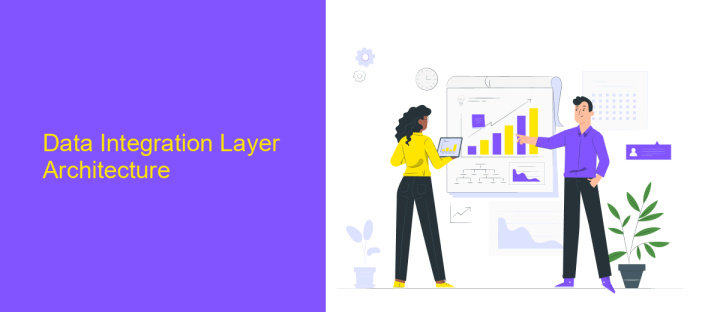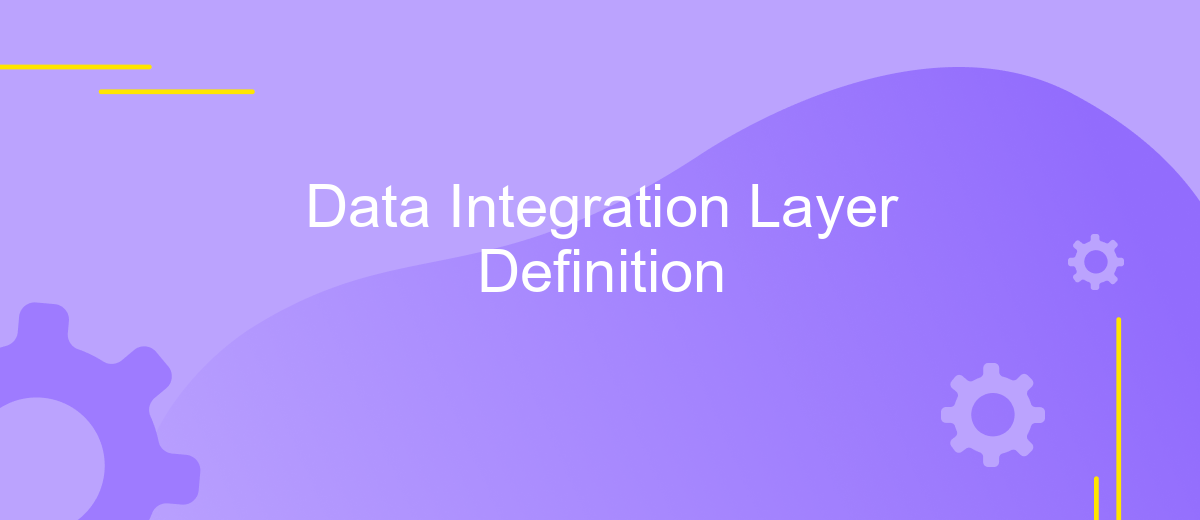Data Integration Layer Definition
The Data Integration Layer (DIL) serves as a crucial component in modern data architecture, enabling seamless data flow and interoperability between disparate systems. By consolidating data from various sources into a unified framework, the DIL ensures consistency, accuracy, and accessibility, thus empowering organizations to make informed decisions and drive business growth. This article delves into the definition, functions, and significance of the Data Integration Layer.
Introduction
In today's data-driven world, the ability to seamlessly integrate diverse data sources is more critical than ever. A Data Integration Layer (DIL) serves as a crucial component in modern data architecture, enabling organizations to combine, transform, and harmonize data from various sources into a unified view. This layer not only facilitates efficient data management but also enhances the quality and accessibility of data for informed decision-making.
- Combines data from multiple sources
- Transforms and harmonizes data
- Enhances data quality and accessibility
- Supports informed decision-making
By implementing a robust Data Integration Layer, businesses can overcome the challenges associated with disparate data systems and ensure that their data infrastructure is scalable and adaptable. This foundational layer is essential for achieving a cohesive and comprehensive data strategy, ultimately driving better business outcomes and fostering innovation.
Data Integration Layer Architecture

The Data Integration Layer (DIL) Architecture is a critical component in modern data management, designed to facilitate seamless data flow between disparate systems. It acts as a middleware, ensuring that data from various sources is harmonized, cleansed, and transformed before being delivered to target systems. This architecture typically includes components such as data connectors, transformation engines, and data repositories. Data connectors are responsible for interfacing with source systems, while transformation engines standardize and enrich the data. The processed data is then stored in data repositories, ready for analysis and reporting.
One of the key aspects of an effective DIL architecture is its ability to integrate with various services and platforms. Tools like ApiX-Drive play a crucial role in this context by offering pre-built connectors and automation capabilities, which simplify the integration process. ApiX-Drive allows users to set up data flows without extensive coding, making it easier to synchronize data across multiple applications. This not only enhances operational efficiency but also ensures data consistency and accuracy, which are vital for informed decision-making.
Data Integration Layer Functionality

The Data Integration Layer (DIL) serves as a crucial intermediary that consolidates data from disparate sources, ensuring seamless data flow across various systems. This layer acts as a bridge, enabling efficient data transformation, normalization, and consolidation, which are essential for maintaining data consistency and integrity.
- Data Extraction: The DIL extracts data from multiple sources, such as databases, APIs, and flat files, ensuring comprehensive data collection.
- Data Transformation: It transforms the extracted data into a unified format, applying necessary rules and business logic to ensure compatibility across different systems.
- Data Loading: The transformed data is then loaded into a target system, such as a data warehouse or a data lake, making it accessible for analysis and reporting.
- Data Quality Management: The DIL incorporates mechanisms to validate and cleanse data, ensuring high-quality and reliable data is integrated.
- Real-time Data Integration: It supports real-time data integration, enabling up-to-date data availability for time-sensitive applications.
By performing these functions, the Data Integration Layer ensures that organizations can leverage accurate and timely data, facilitating informed decision-making and operational efficiency. Its robust architecture and functionality make it an indispensable component in modern data management strategies.
Benefits of Using a Data Integration Layer

Implementing a Data Integration Layer (DIL) in your organization can significantly enhance the efficiency and accuracy of data management processes. By centralizing data from various sources into a unified system, a DIL ensures that data is consistently formatted and readily accessible for analysis and decision-making.
One of the primary advantages of using a DIL is the reduction in data silos. Data silos can lead to inconsistencies and redundancies, which can hinder business operations and insights. A DIL mitigates these issues by providing a single point of access for all integrated data sources.
- Improved data quality and consistency
- Enhanced data governance and compliance
- Streamlined data access and sharing
- Reduced operational costs and inefficiencies
- Better support for advanced analytics and reporting
Furthermore, a DIL facilitates real-time data integration, allowing organizations to respond swiftly to market changes and operational needs. This agility can be a critical factor in maintaining a competitive edge and driving innovation within the industry.


Challenges of Implementing a Data Integration Layer
Implementing a Data Integration Layer presents numerous challenges, starting with data consistency and accuracy. Ensuring that data from various sources is harmonized and free from discrepancies requires robust data validation and cleansing mechanisms. Additionally, handling different data formats and structures can be complex, requiring sophisticated transformation logic to ensure seamless integration. Performance issues also arise, as large volumes of data need to be processed in real-time, necessitating scalable infrastructure and efficient data processing algorithms.
Another significant challenge is the integration of legacy systems with modern applications. Legacy systems often lack APIs or have limited connectivity options, making integration cumbersome. Security concerns also play a critical role, as integrating multiple data sources increases the risk of data breaches and unauthorized access. Tools like ApiX-Drive can help mitigate some of these challenges by providing a platform to easily set up and manage integrations, automate data workflows, and ensure data security. However, careful planning and continuous monitoring are essential to address these complexities effectively.
FAQ
What is a Data Integration Layer?
Why is a Data Integration Layer important?
How does a Data Integration Layer work?
What are the common challenges in implementing a Data Integration Layer?
What tools can be used to implement a Data Integration Layer?
Do you want to achieve your goals in business, career and life faster and better? Do it with ApiX-Drive – a tool that will remove a significant part of the routine from workflows and free up additional time to achieve your goals. Test the capabilities of Apix-Drive for free – see for yourself the effectiveness of the tool.

